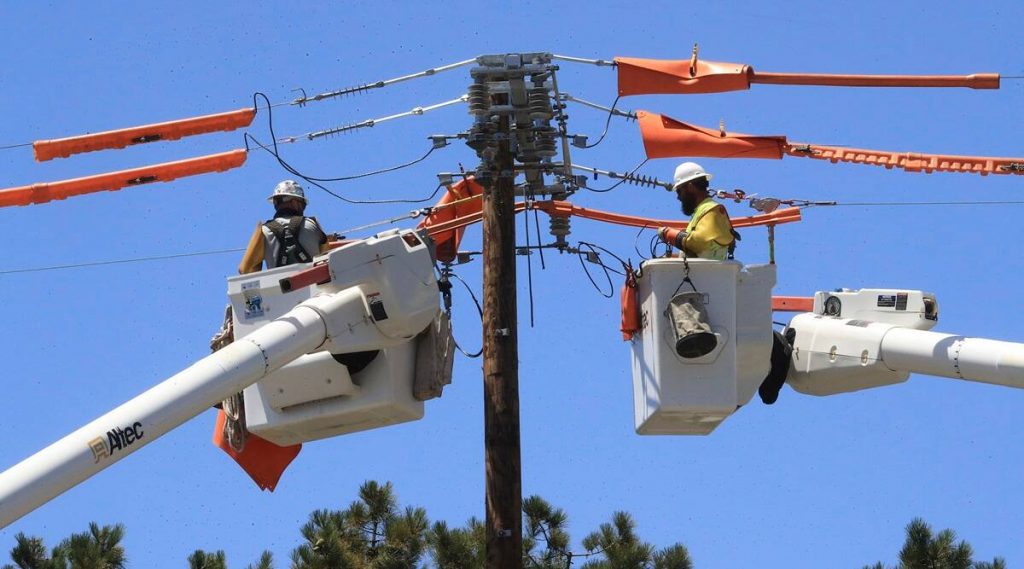When California, New York, Texas and other states began deregulating their electricity markets in the 1990s, officials promised that those changes would foster competition and make energy more affordable.
But it hasn’t worked out that way.
Average retail electricity costs in the 35 states that have partly or entirely broken apart the generation, transmission and retail distribution of energy into separate businesses have risen faster than rates in the 15 states that have not deregulated, including Florida and Oregon. That difference has persisted for much of the past two decades or so, including in the past year, when energy prices increased worldwide after Russia invaded Ukraine.
On average, residents living in a deregulated market pay $40 more per month for electricity than those in the states that let individual utilities control most or all parts of the grid. Deregulated areas have had higher prices as far back as 1998.
“After the numbers are that far apart for this long you have to wonder if something isn’t working very well,” said Robert McCullough, an energy researcher and consultant who analyzed electricity rate data at the request of The New York Times. “If your car hasn’t been working for 20 years, maybe you should take it to the dealership.”
One big reason deregulated areas have higher rates is that utilities there are spending more on power lines to carry electricity over hundreds of miles. That spending, which is ultimately paid for by individuals and businesses, often gets minimal review by state and federal regulators. By comparison, officials in areas that have not deregulated their energy maintain much greater control over utility spending and rates.
In addition, wholesale power prices tend to be higher in deregulated markets because the profits taken in by energy suppliers — companies that are separate from the utilities that deliver electricity to homes — more than offset any savings to consumers from greater competition and efficiency. In regulated markets, single utilities manage all or most parts of the grid, including producing energy and delivering it to homes and businesses.
The deregulation of electricity markets is the subject of intense debate among academics, analysts, regulators and utility industry executives. To critics such as McCullough, the gap between electric rates is a powerful argument against deregulation.
But many energy executives and scholars, including William W. Hogan, a professor of global energy policy at Harvard’s Kennedy School, contend that allowing more businesses to generate electricity and trade it in wholesale markets makes the system more efficient. Some officials, including in the Biden administration, have argued that regional approaches to electricity are essential to fighting climate change by making it easier for lots of companies to build wind and solar farms and connect them to the grid. Relying on just a few large utilities to do that would make the effort much longer, deregulation proponents argue.
For much of the last century, utilities controlled the production, transmission and distribution of power. Governments granted these companies monopolies and regulated them.
But advocates for deregulation argued that the arrangement gave utilities excessive influence over legislatures and regulators.
In the 1990s, Hogan became a leading voice for change. His ideas first got traction in California.
In 1996, the California Legislature and Gov. Pete Wilson deregulated the energy market. The state’s three large utilities — Pacific Gas & Electric, Southern California Edison and San Diego Gas & Electric — would still deliver electricity, but they would buy much of that energy from independent power producers and traders on a wholesale market.
“We wanted to have an electricity wholesale market,” Hogan said. “Anybody who wanted to participate could participate.”
But California’s deregulation quickly turned into a disaster, with surging prices and crippling blackouts. Widely attributed to traders at Enron and other companies, the crisis revealed that the state had not put adequate safeguards in place.
California stabilized its system in the early 2000s, but analysts say the state, with its high electricity rates and recent power outages, still serves as a cautionary tale.
Esperanza Vielma, a resident of Stockton, California, typically pays Pacific Gas & Electric $300 a month to power her 1,100-square-foot house, she said. During a heat wave last summer, one bill reached almost $600.
“We have to alter, spending-wise, what we’re able to do and not do,” she said.
PG&E has rate tiers that start at 32 cents a kilowatt-hour, or $320 for 1,000 kilowatt-hours, and rise to 49 cents. The utility’s lowest rate is twice the national average.
PG&E’s rates are high mostly because of spending on power lines. Since 2006, the portion of customers’ bills used to pay for transmission has increased 411%, according to the Utility Reform Network, a consumer advocacy group.
Some of that spending has been driven by California’s severe drought , which was made worse by climate change. PG&E’s equipment ignited wildfires after coming into contact with dry trees and brush, and the company is spending billions of dollars to improve safety.
PG&E acknowledged the growing hardship that electricity rates posed and said it was trying to reduce the impact. The company said it was seeking more federal aid, selling its San Francisco office and allowing wireless companies to attach equipment to utility poles.
“We are committed to delivering safe and reliable and clean energy, and reducing wildfire risk,” said Lynsey Paulo, a PG&E spokesperson, noting that rates are approved by state and federal regulators. “We know we have a responsibility to manage rising costs for our customers.”
In a statement, the California Independent System Operator, which manages the electric grid for about 80% of ratepayers in the state and an electricity market that covers many Western states, said expanding the wholesale electricity market and cooperating with other states had helped residents save money.
Scott Harvey, a consultant to the state’s system operator and other regional grid managers, agreed with that assessment but acknowledged that retail rates were too high and climbing too fast.
“I think it is foreshadowing to some degree,” Harvey said of California’s electricity prices. Consumer costs could spike in the short term as utilities upgrade equipment, he added. “I’m worried about that. We’re locking ourselves into a lot of choices.”
Competition ought to have driven down the price of energy, but it has effectively left consumers paying more for power that should have been relatively cheap, said Tyson Slocum, who directs the energy program at Public Citizen, a research and advocacy group founded by Ralph Nader. “These markets are actually not very efficient. They’re not always the least-cost option.”
Two economics professors reached a similar conclusion in a December working paper about electricity markets. “We find that the higher markups charged by generation companies more than offset the efficiency gains, leading to higher wholesale prices,” wrote the researchers, Alexander MacKay of Harvard and Ignacia Mercadal of the University of Florida.
One former state energy regulator, Brien Sheahan, who was chair of the Illinois Commerce Commission, said energy costs could continue rising rapidly in the coming years, partly because utilities will spend hundreds of billions of dollars on the grid to address climate change and contend with more devastating weather extremes. While that spending could eventually lead to savings and a more reliable grid, it will probably drive up rates in the short term.
Sheahan said costs were likely to rise more in deregulated states, such as Illinois, because there will be fewer checks and balances on how utilities spend money than in regulated states. “It’s just going to get worse and worse and worse,” he said.










More Stories
How Japan Airlines crew led 367 passengers to safety from a burning plane
Rishi Sunak declares success in meeting UK’s asylum target
Electroplus Ltd Sponsors the Truth Story Newspaper News